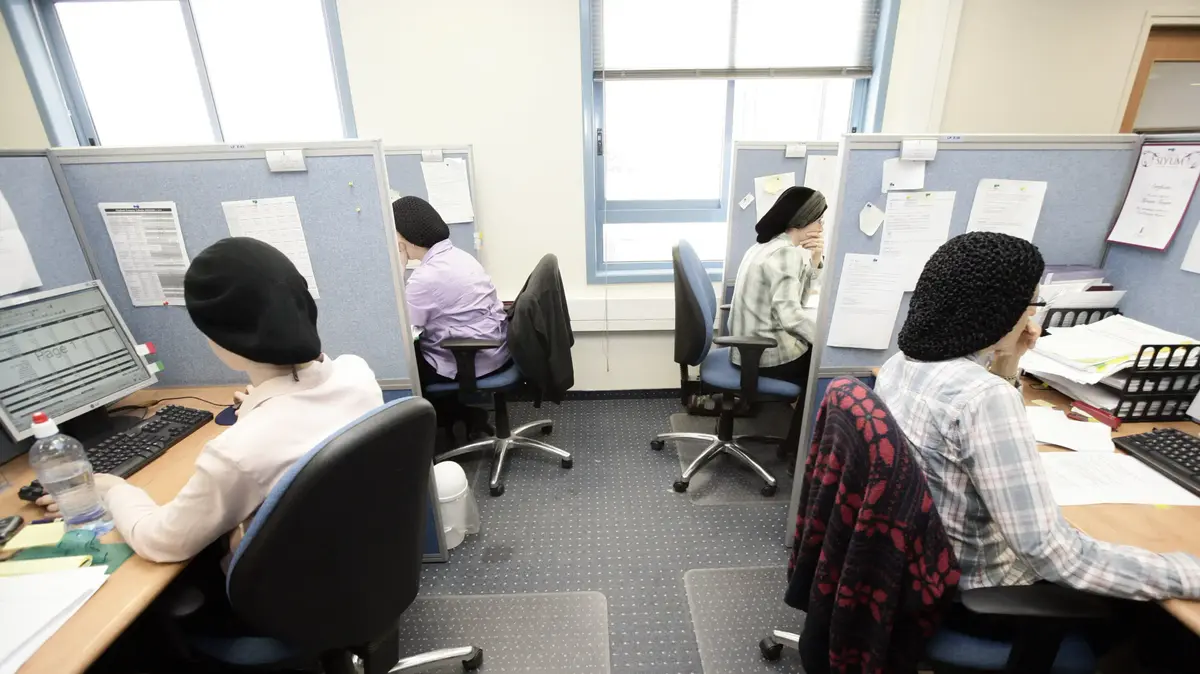The percentage of working ultra-Orthodox men reached 53.5% and is the highest in the last 25 years - according to data published in the ultra-orthodox society yearbook of the Israel Democracy Institute.
On the other hand, it appears that 44% of the ultra-Orthodox population is below the poverty line.
Against the background of the establishment of the new government and the coalition agreements, issues concerning ultra-Orthodox society, such as core studies, employment and poverty, made headlines.
The ultra-orthodox yearbook data, which are based on data from the CBS, government authorities and the National Insurance, raise quite a few surprises.
Despite the increase in the proportion of working ultra-Orthodox men, their income is only 53% of that of non-Orthodox Jewish men.
Also, the data shows that the number of ewes increased by only 2.4%.
Also regarding integration into the labor market, the data show that 80% of ultra-Orthodox women work.
Despite their integration into the job market, it appears that about 44% of the ultra-Orthodox population lives below the poverty line.
According to the yearbook, the ultra-orthodox population in Israel numbers approximately 1.28 million, and it has the fastest growth rate among developed countries.
In 2020, 26% of the ultra-Orthodox lived in Jerusalem, 16.6% in Bnei Brak and 23.7% in the ultra-Orthodox suburbs - Beit Shemesh (which became the third largest), Modi'in Illit, Beitar Illit and Elad.
From the analysis of the patterns of the ultra-Orthodox family unit in the last 15 years, a decrease in average fertility is evident - from 7.5 children per woman to 6.5 in 2019-2021 (compared to 2.5 children per woman in the non-Orthodox population).
Lapid against the demands of the ultra-Orthodox parties: "Who is going to pay for all the things they distribute to their sectors?"
// Photo: Yehuda Schlesinger
Few work in high-tech
The data also show that ultra-Orthodox are happier: 82% of ultra-Orthodox reported that their mental state is very good, compared to 58% of non-Orthodox;
61% of ultra-Orthodox Jews reported a very high level of life satisfaction, compared to 24% of non-Orthodox Jews.
Will they be able to integrate into the world of computers?
Haredim near the Intel factory (for illustration), photo: Lior Mizrahi
Dr. Gilad Malach and Dr. Lee Kahaner, who edited the yearbook, said: "The yearbook allows us to get a first picture of ultra-Orthodox society after the Corona virus and during the term of a non-Orthodox government. The gaps between ultra-Orthodox and non-Orthodox in the fields of employment have not narrowed in recent years, and ultra-Orthodox still are concentrated in the fields of education and welfare and are found in low volumes in the fields of industry and high-tech.
"Also from a forward-looking perspective, the yearbook shows mixed trends: on the one hand, there is an increase in the number of academics, but most of them are entitled to a degree in the field of education. On the other hand, there is a rapid increase in the number of winners of technological training, which may also affect the fields of employment and wages of their graduates in the future," said the authors of the study .
were we wrong
We will fix it!
If you found an error in the article, we would appreciate it if you shared it with us









